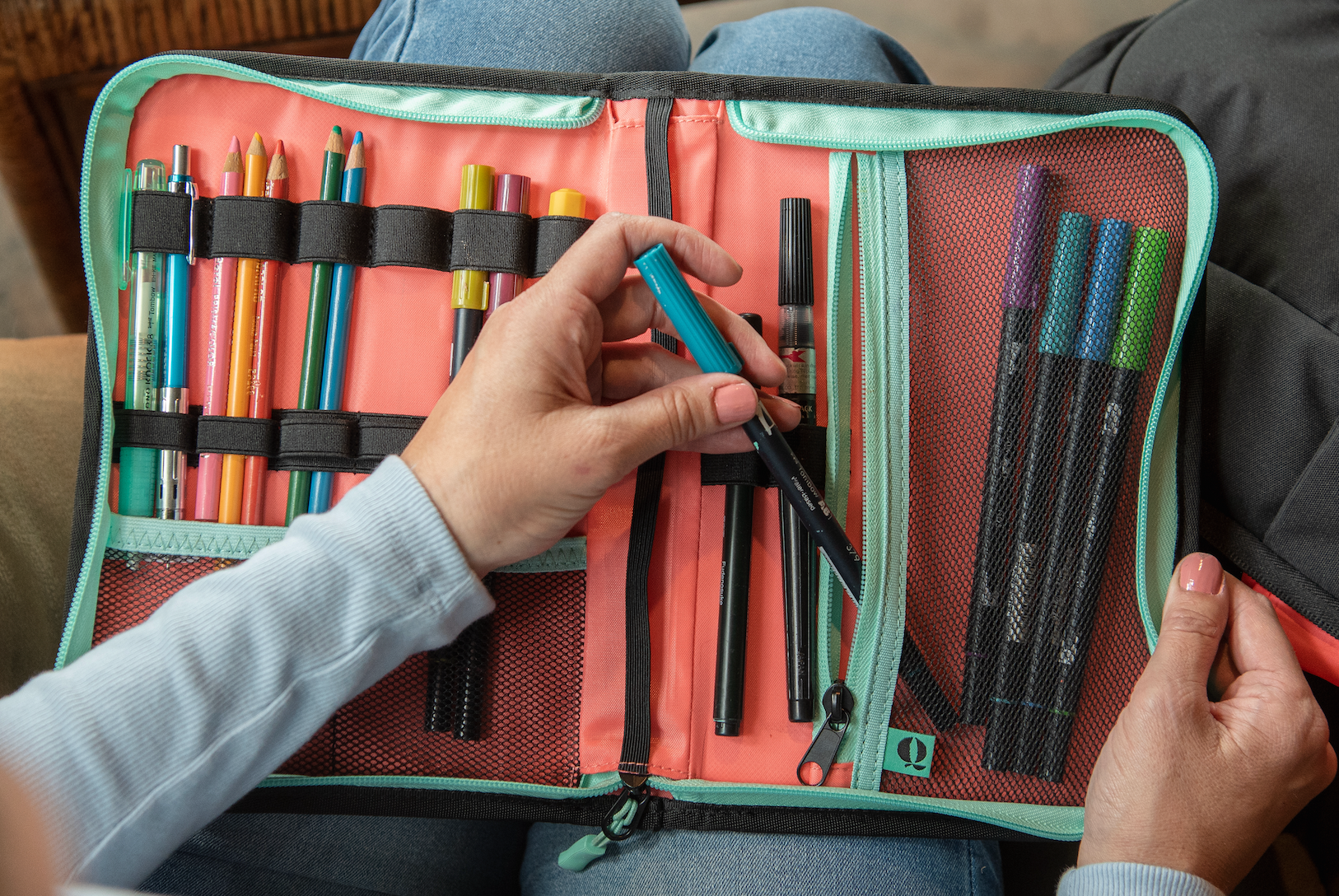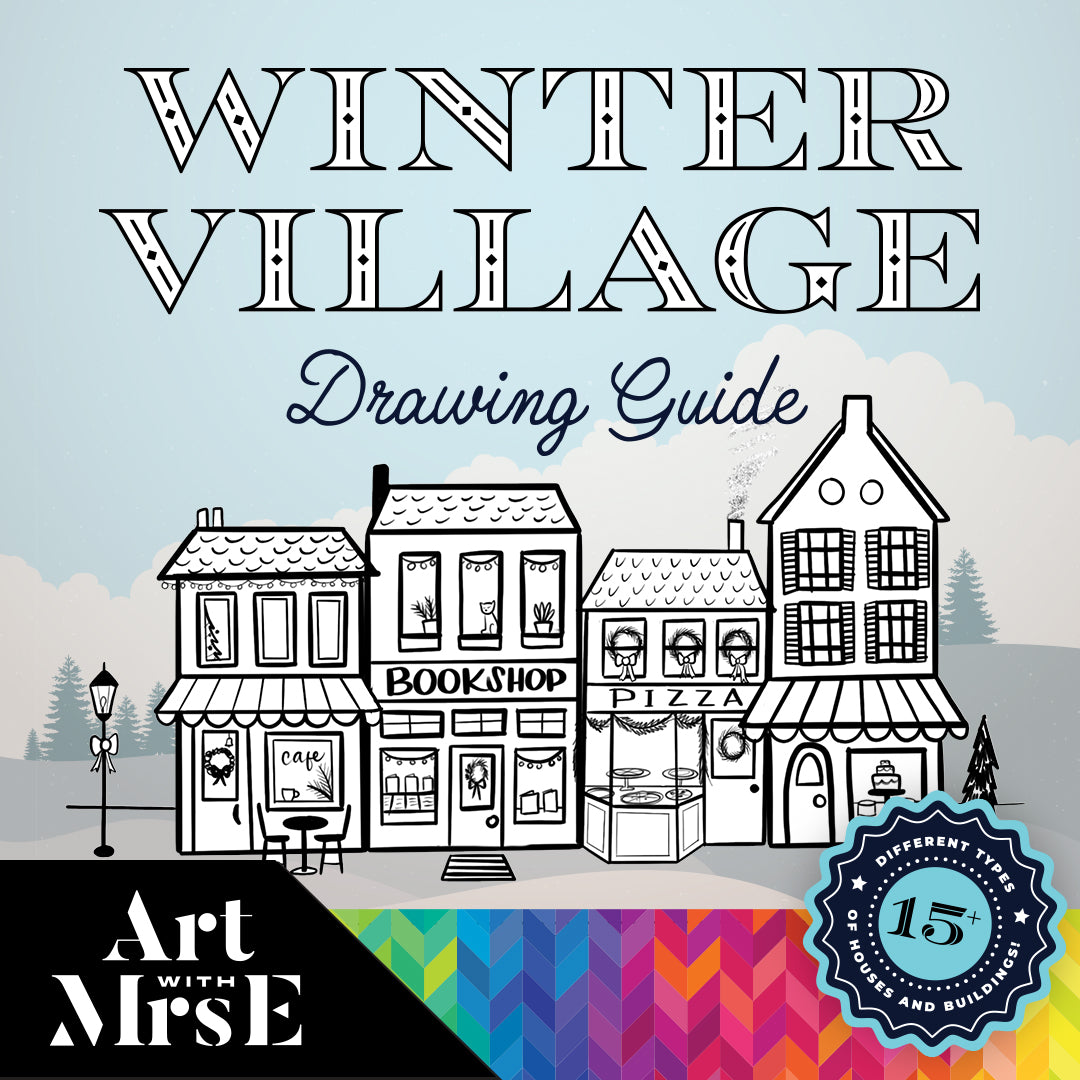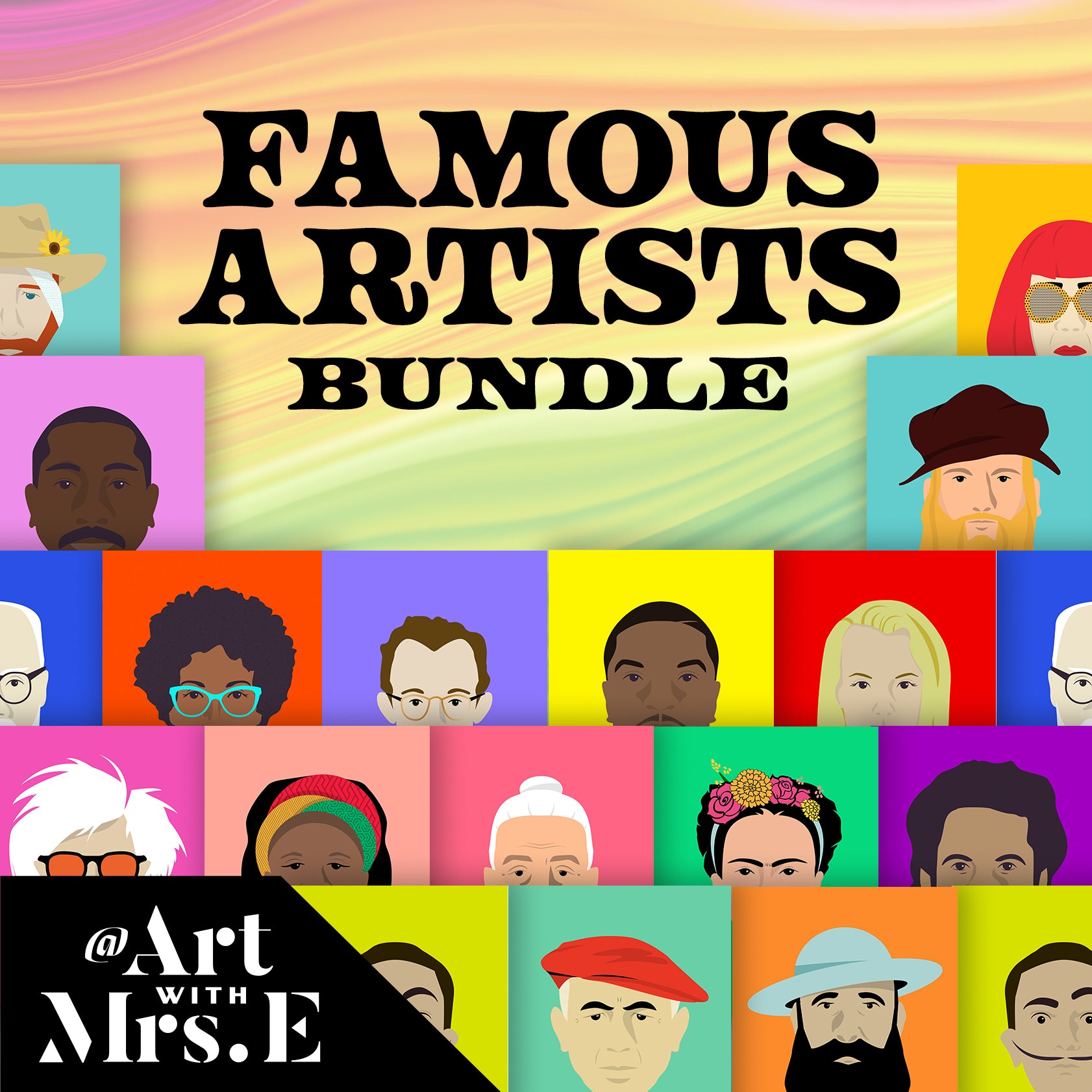“They won’t care what you know until they know that you care”.
16 years ago when I was sitting in my Induction class, this was a quote that my instructor reminded us and has ALWAYS stuck with me. Building trust, rapport, routines and a genuine connection with our students should always be the number 1 priority. Everything else can wait. Do not rush through the first few weeks of school by diving head first into your curriculum. Your curriculum will be there. But your opportunity to establish a strong foundation with your students may not always be. What I mean is, don’t treat your art room like an art camp and try to “turn and burn” projects and get the kids in and out as fast as you can.
You have the time. You have the time to talk to your students and learn about who they are. You have the time to learn about their interests and what their favorite activities are. You have the time to ask questions and allow them to use art to express who they are and how they view themselves. You have the time to sit down next to them and create your own piece while connecting shoulder to shoulder or face to face with your students. There are so many ways we can connect with our students at the start of the year to build a respectful and wonderful relationship. Here are specific ways I have worked to build a solid rapport with my students:
-
Design Personalized Sketchbook Covers

This is always the VERY first thing we make in in the art room: Sketchbooks! Do not bother trying to scrounge together the money to buy each of your students a sketchbook, because they are so easy to make! In fact, you can see the whole step by step process here, as well as WHY I believe sketchbooks are important to have in the classroom here. But the thing I love the most about the way I have been making sketchbooks with my students over the last 15 years is how I am able to learn so much about them just from their sketchbook cover design.
I know many teachers will do a more process based sketchbook cover which can certainly be fun and a great one and done project to start the year, but personally I love having my students design their own cover that is focused on one thing: THEM. Each year my students are to design a sketchbook cover with the criteria of:
- It has to have a theme and that theme has to be something about them. Their favorite interest, hobby, their favorite food, animal, subject, game, whatever! I always ask them to think about themselves in 20 years... and if they were to find their old 4th grade sketchbook, what would be on the cover? What are you super into right this VERY MOMENT. Because in so many ways sketchbooks are such a great marker of time. I want my students to niche down and focus on something that they themselves are into (not their neighbor, not their brother, not me- them!)
- Their NAME has to be creatively incorporated in the cover design. This can be a little tricky at times but I demonstrate tons of ways you can easily sneak your name into your cover. Whether it's writing your name on the collar of the picture of your pet you drew, or adding each letter of your name in a bubbles in an under the sea drawing, there are sooooo many opportunities for creativity here!
- Students must FILL THE SPACE. I spend alot of time talking about space and scale and demonstrating what "tiny baby ant drawings" look like, vs drawings that TAKE UP SPACE and go off the edge. We talk a bit about different perspectives as well and it's soooo amazing to see what kids will come up with when given freedom yet still have guidelines and parameters.




This is hands down the best way to instantly start connecting with your students from day one. While my students are designing their covers in pencil, I walk around and quietly ask questions about the cover designs in progress, asking each child about their special interests that they are drawing. Not only is this a great way to get to know the interests of your students but it's also a great way to informally "pre-assess" their artistic skills and knowledge and you have a much better understanding of where students are coming into your class and where you can go moving forward.
2. Create Art WITH Your Students

While students are working on their sketchbook covers, or really any art project, make it a point to sit down at the student tables with your kids and create WITH THEM. Either continue working on your example, or pull out your own personal sketchbook and model what it's like to use your sketchbook for daily creating. There is something magical that happens when you are able to share the creating experience with others, and giving your students the *special* chance to sit with you while you both work, have quiet meaningful conversation, and for them to see you creating your own art is absolutely magical to your students. It may seem trivial or like a "waste of time" because I know you have about a million other things you could be doing, but this small gesture will make a huge impact in building relationships with your students.


3. Build in Time for Students to Share their Art

This is so important. Once your students are finished with their sketchbook covers that are all about them, carve out the time to allow the to share their art with the class if they'd like to. Not only will this allow your students to share their hard work with others, but it communicates to your students that their art is important and deserves the time in your class to be shared with others! It's important to give guidelines when sharing to avoid either one word answers or long winded friends that could talk all day. I like to have them follow the script of "Hi, my name is ______ and I draw _____ as my theme for my sketchbook cover because _________________. The thing I am the most proud of on my cover is __________". I also allow them to answer questions from 2 students in the class. I love this part. When other students ask thoughtful questions about either the idea behind the art, or the physical characteristics of the art. We always end with a big round of applause and then the speaker chooses the next student to come up and share (I always remind them to pick someone who is sitting quietly and respectfully- works like a charm!)


4. Show Students Your Own Art Work. Both as a Child and Now!

If I could scream this from a literal mountain, I would. SHOW YOUR STUDENTS YOUR OWN ARTWORK. This is soooo so so important in not only gaining your students respect, but also showing them how much have grown and improved as an artist yourself. I have a folder or old art of mine that my mom saved from my elementary years, and I love showing my students my very first self portrait as a kindergartener. Sometimes they giggle, sometimes they are impressed, it's always a mixed bag. But then, I will show them a self portrait from 2nd grade, then 4th grade, and then eventually my high school, college and current art. Their jaws are on the floor. Then there is usually the "Wow Mrs. Edington, you're a REAL ARTIST" but I always remind them... "But did my art start out this way?" When your students can see your vulnerability but also your growth as an artist, they will gain so much admiration and respect for you and are so much more likely to give you their full engagement! I also will put out a few of my own sketchbooks for students to look through while they work on their covers and they absolutely love looking at my personal work.
Also, don't be shy- hang some of your own art in your classroom! Your students will love it! Here you can see a gallery wall from my classroom with a painting I did of my dog Maddie.


5. Start with a Collaborative Art Project

This is such a great way to teach teamwork, kindness, compassion, and teach your students that not all art is for ourselves. Sometimes people create art for others with the intention of sharing their talent and beauty with the world. When students work together to create a collaborative piece of art it puts less pressure on them, and provides a shared sense of pride in all students who have contributed in creating something beautiful for all to enjoy. Plus, a well planned collaborative project is such a great way to make a bold impact for the whole school and outside visitors showcasing what a dynamic art program you have making it a win for everyone!! One of my favorite ways to start the year off is with a "Dot Day" collaborative display. You can find the step by step process for two of these displays here and here.


6. Proudly Display Students' Art

What better way to express your pride in your students than displaying their artwork for all to see? The benefits to hanging a child's artwork are innumerable. When you take the time to prioritize hanging student art, you are boosting self-esteem, fostering an appreciation for the arts for not only the child but the community, fostering creativity, enhancing the school environment and telling that child that they are important, and their work matters.


7. Create a Learning Environment That is Safe, Inviting & Encouraging

I once remember a student walking into my art room, pausing, closing her eyes, and took a deep breath. I said, "Honey, are you ok?" and she replied "Yes, I just love it in here". I will never ever forget that moment. The moment when they felt instant relief and calm when coming into my classroom. She felt safe.
I urge you to create the environment that you wish you could create in as a child. Now you certainly don't have to go all out in the ROYGBIV from like I did (I just so happen to have been a paint chip hoarder from my days of painting murals) but you can absolutely add your own personal touches to create an environment that is warm and special.
I love creating child friendly and warm visuals for my art room that are not only fun but hopefully inspiring. Whether it's drawing little animals that help convey line direction, or diverse Famous Artists posters that allow students to see themselves in the greats, affirming quotes like "Every Child is an Artist" from Picasso, or even just fun little characters created out of art supplies that will make a student smile. Creating these types of classroom visuals is my absolute favorite thing and if you're interested, you can also hang these art room visuals in your space. Just head to my shop or tpt store.
8. Start the Year with a Self Portrait (but make it FUN)

What better way to kick off the year in art than with a self portrait? I say that somewhat sarcastically because not every kid is always ramped up to draw themselves. However, when you teach a self portrait lesson that focuses not just on the outside but more on the INSIDE, that's when you will see some magic. I have been teaching a lesson I call "The Real Me" off and on for 15 years and the reason why I absolutely love it is because it's an amazing opportunity for students to express who they are on the inside (which is what counts!) This lesson has it all, step by step instructions and resources on how to teach a self portrait, how to mix your perfect skin tone, and the opportunity to collage special interests and abilities we have that make us unique and special! AND the fact that the project is interactive is a huge hit! I always encourage students to bring in pictures of their family, pets, anything they have from home that will most accurately express the special person they are. You can grab the full lesson here.



9. Use Positive Reinforcement

I know this is education 101 but dang, it works!! When creating your classroom management systems, be sure to make everything as black and white as possible. Kids want to know exactly what will happen if they do XYZ (both with positive and negative actions). So make things as crystal clear as possible. When you are deciding on what your students can earn as their positive reinforcement, please don't break your bank! Two incredibly effective strategies I have had over the years are: Each class, I pick one "Art Star". This person is selected for being the best role model & helper in art that day. They earn a sticker at the end of class, a note home saying they were chosen as the art star, AND they get to be my teacher assistant the next class. Yall, other than the sticker, everything is free! Another form of positive reinforcement I use is face painting. Ok here me out, I know it seems like A LOT but I promise it's not. I found to be THE most effective reward as part of my classroom management system since my first year of teaching. I created a simple poster of options to choose from, and then at the end of year quarter, I paint the faces of all of the students who have kept all their "points" (this is a blog post for another day). But for one day at the end of each semester the students work quietly in their sketchbooks while I call them up one at a time for their chosen face paint. This is not only something that the students love, but their families know that they have been doing a great job when the come home with their face paint.
10. Use Humor in Your Teaching Method (Embrace Being a Little Silly)

If you teach elementary school embrace the innate silliness that is children! Kids are silly! You can be firm but also soft when it counts, and leaning into your silly side is such a great way to create a connection with your students. There is nothing better than laughing with others and when your students are able to see you as not only a teacher that they respect but one that they genuinely enjoy being around because you make them feel good, well then that's the magical combination right there. Dress up as a famous artist, make a "toot" sound when squeezing the paint bottle, the possibilities are endless when you teach kids! So loosen up and make 'em laugh! They'll love it!


Remember: Focus on *connection* over curriculum. Because when your students know you genuinely care about them, then they are more willing to listen and try and follow all those rules and procedures that just aren’t anyone’s favorite to practice at the start of the year (but are OH SO IMPORTANT).
Give yourself and your students permission to slow down and get to know each other.
You are an incredible and important teacher. Keep doing amazing things for kids! ❤️ You've got this!



















1 comment
I’m loving your tiny art gold frames on black! Any tips for making my own?